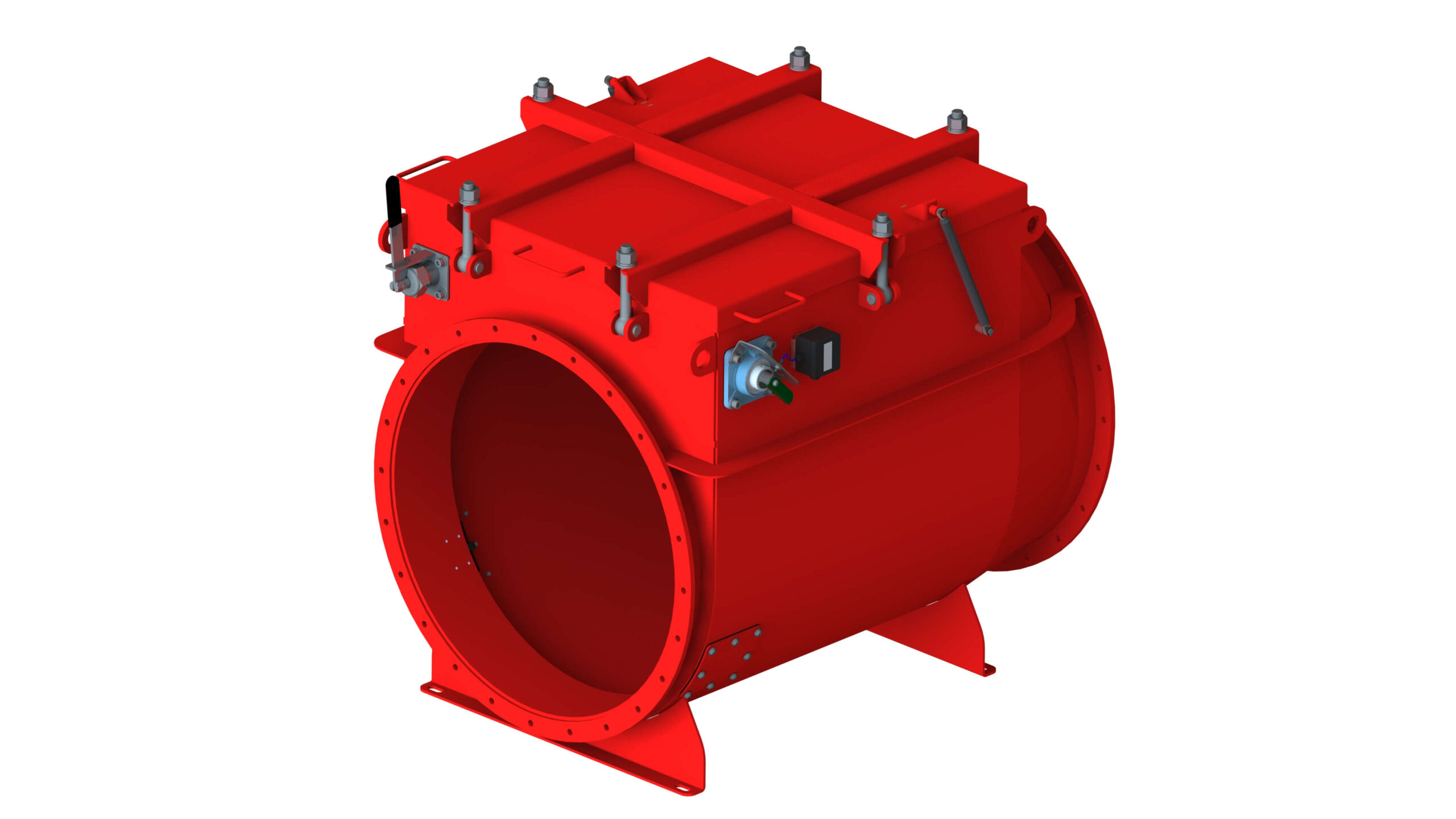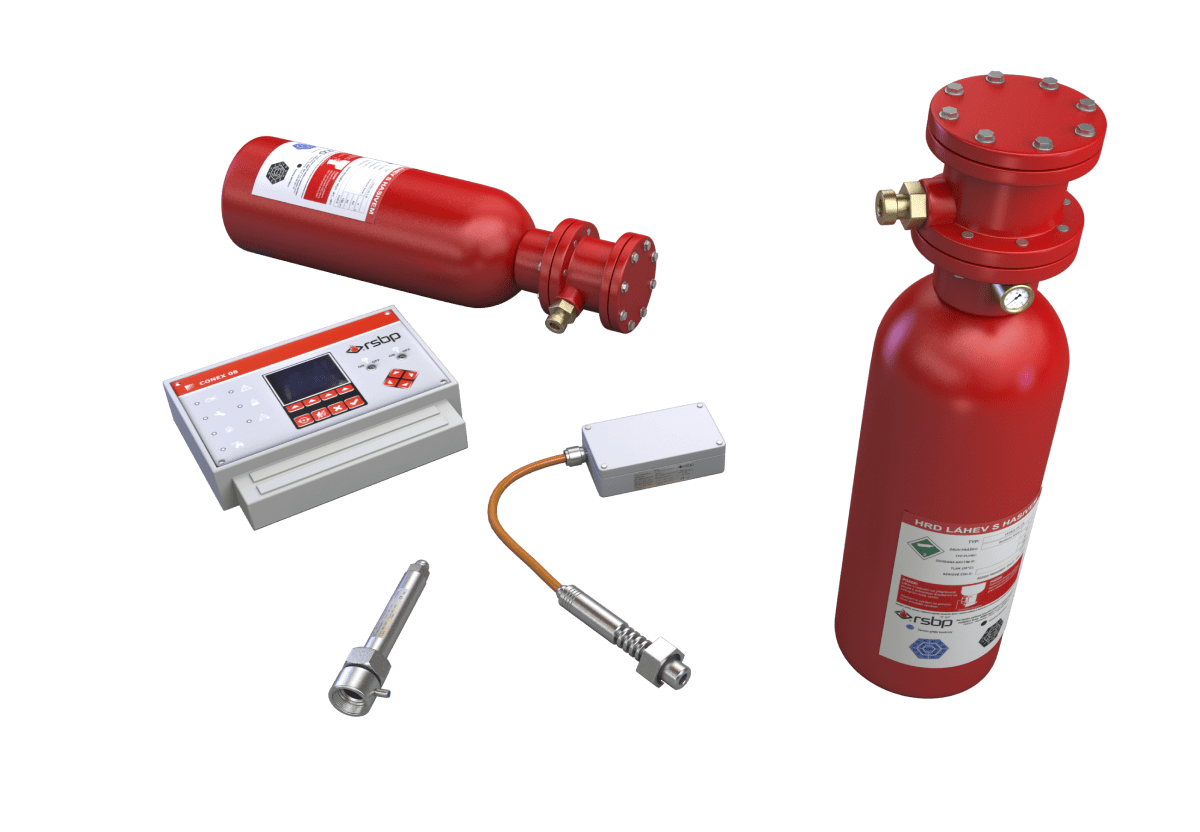Active containment equipment detects changes in the parameters of the dust/air mixture and reacts to them automatically by feeding an explosive suppressant or by cutting off the accident area. These are HRD barriers, pneumatically or electrically operated valves.
Passive containment devices are triggered by overpressure and air flow. These are e.g. check valves.
The installation of explosion containment systems is stipulated in hazardous areas by regulations. For example, the European explosion protection standard EN 1127-1 contains a list and description of technical devices for preventing the spread of explosions:
- Extinguishing barriers (HRD barriers). When an explosion is detected, the system reacts by applying an extinguishing agent. For example, to prevent and contain coal dust explosions in mines, shale (with inert dust) and water barriers are mandatory.
- Quick-acting valves and dampers. They are also often used for containment of coal dust explosions.
- Rotary and double valves to prevent the spread of flames and shock waves.
The task of explosion containment devices is to cut off the accident area and protect adjacent areas from destruction.



